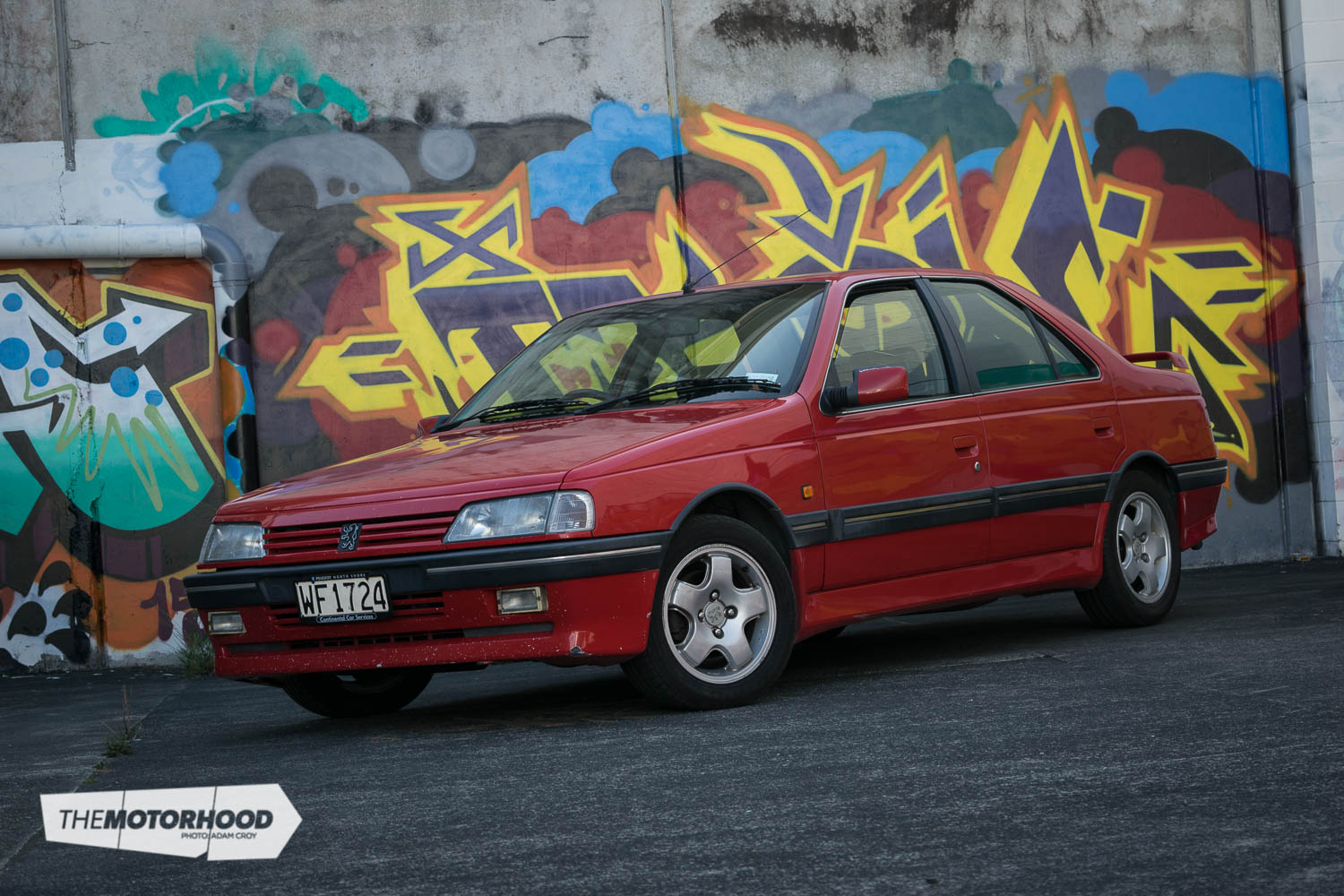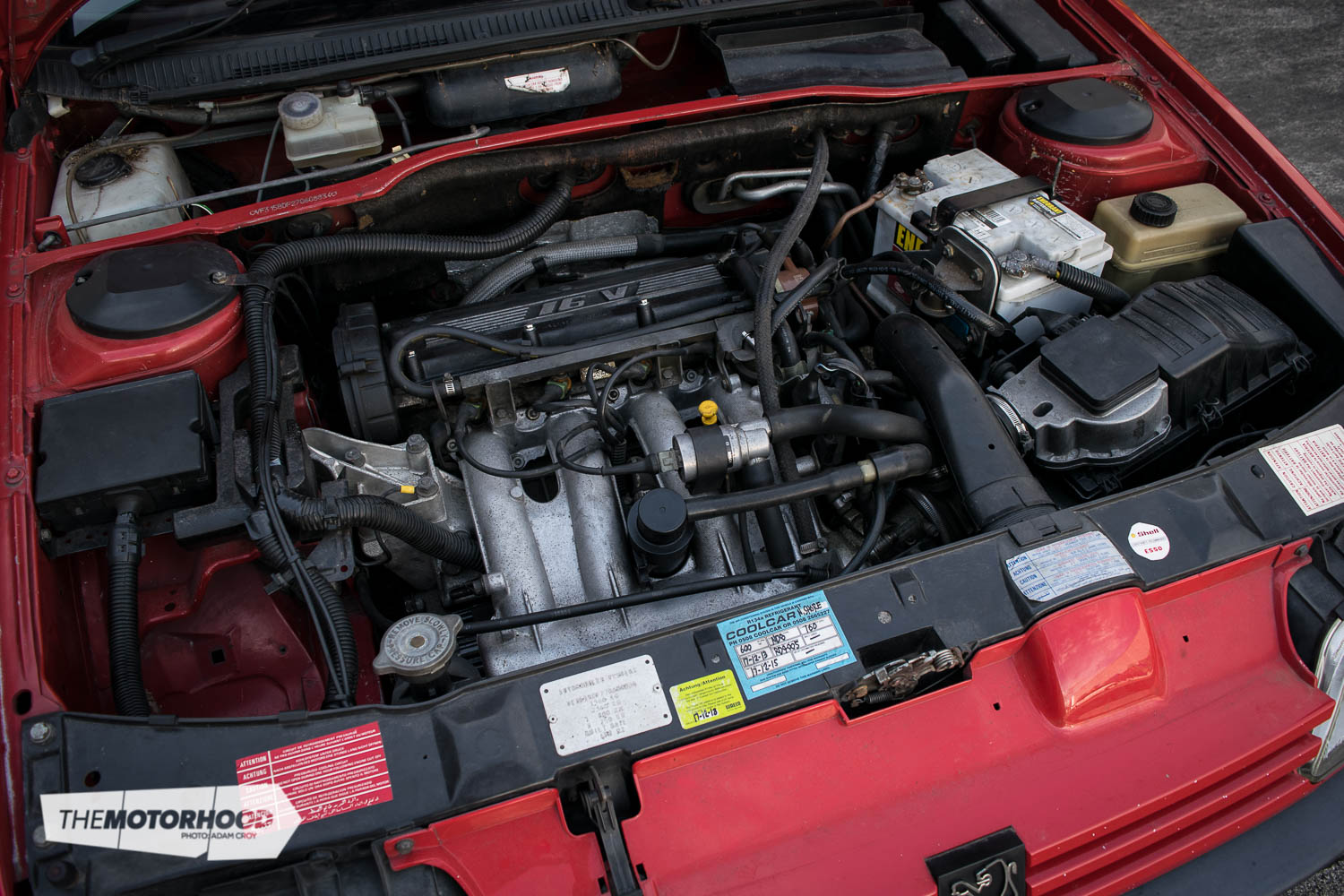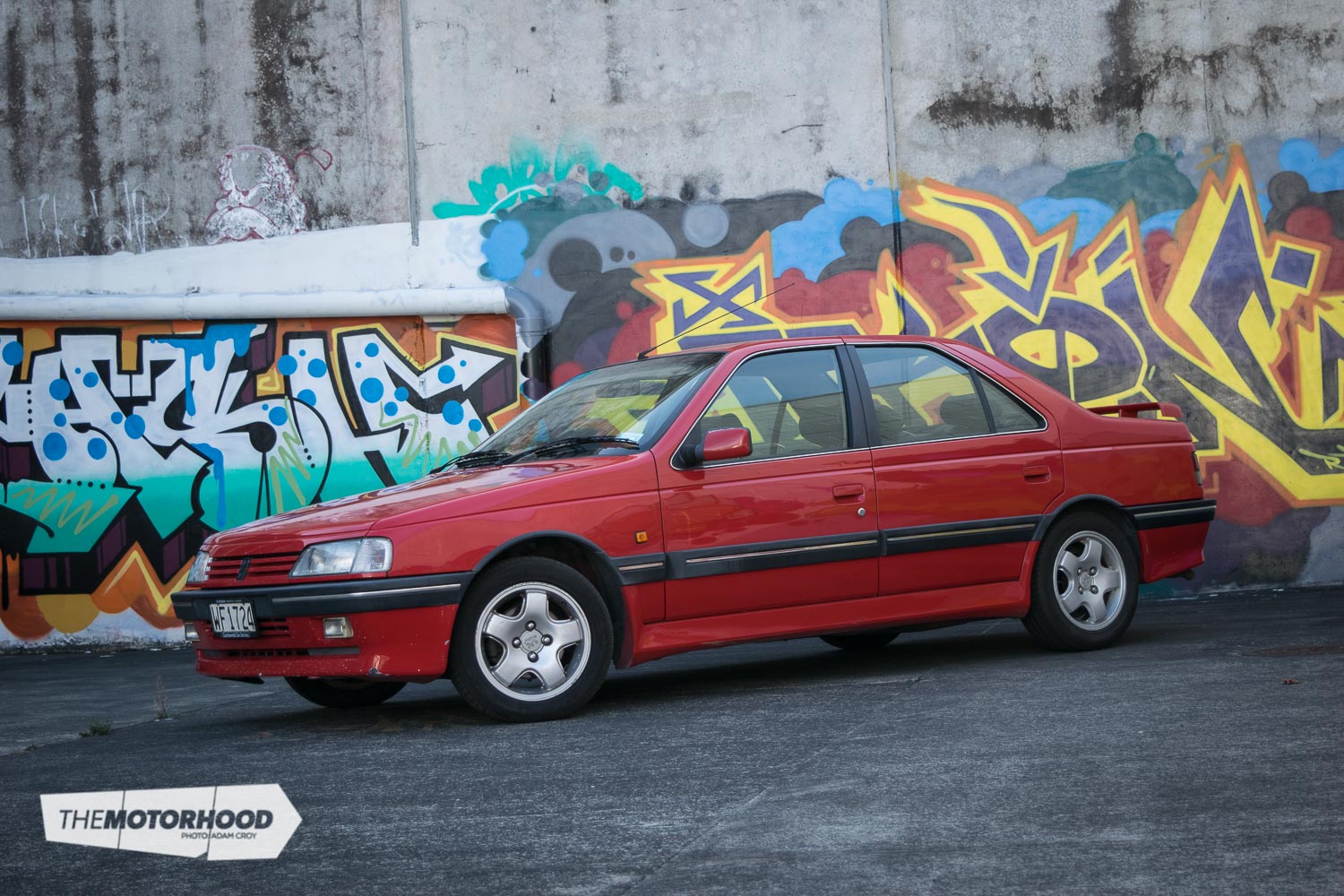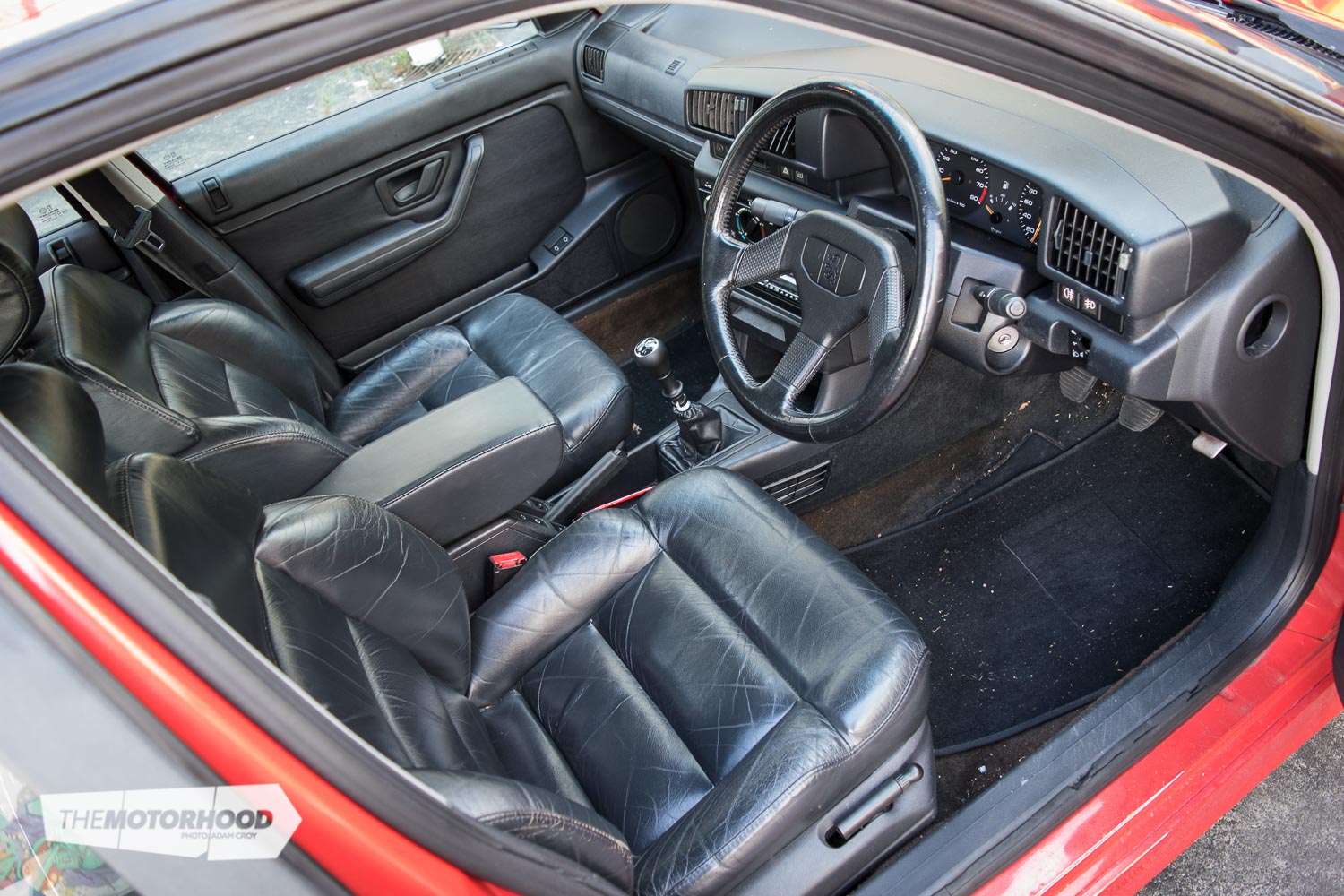If I said “’80s hot hatch”, I’d suggest invariably that the Peugeot 205 GTI would pop into your head. If I then said “fast ’80s sedan”, I very much doubt that the Peugeot 405 Mi16 would register in the first hour. But it should, if only for the name. While the boxy lines of the 405 now more closely resemble that of a Russian tank, the Mi16 was actually a very good car.

With a 7200rpm redline, 1.9-litre motor (apparently costing upwards of £3000 per unit at the time of manufacture), the Mi16 puts out 165hp and sprints along to 100kph in just over eight seconds. While these numbers are not going to impress modern-day high-performance sedan owners, the 405 still drives well. Once you get some momentum up, it even feels a bit like a proper sports car. The Mi16’s party piece was its stiffened chassis and independent suspension making for excellent handling.

This particular example in ‘Bordello Red’ (it’s not actually called Bordello Red) belongs to the writer of this very article you’re reading.

I have had some previous experience with quick, relatively unknown Peugeots, as one of my first cars was a 309 GTI — the 205 GTI’s less-popular brother. Unfortunately, the 309 decided it had an itchy back whilst on a spirited drive through the Waitakere Ranges late at night. Luckily, the only injury sustained was a minor one to my neck when I forgot that the car was upside down and took off my seatbelt without bracing against the roof. It took me around 15 years to take a bold step back into Peugeot ownership following that event.

I bought the 405 with the intention of turning her into a 2K Cup car (by turning up at the event with a tank of petrol on board). In the meantime I just enjoy looking at what is essentially a competitor to the E30 M3 sitting in my driveway for less than $2000.
















